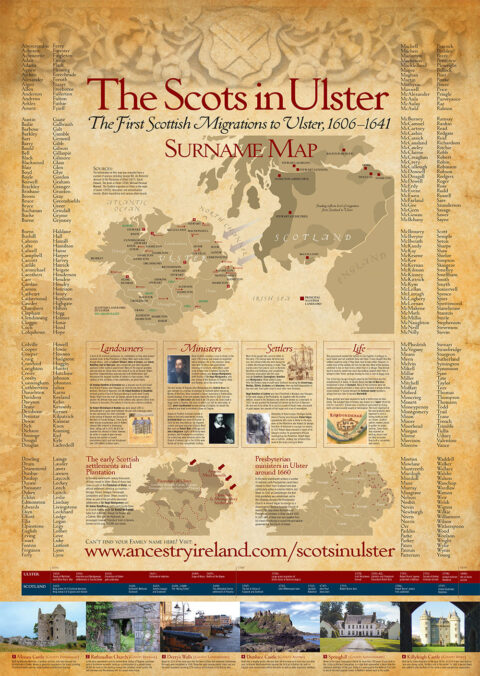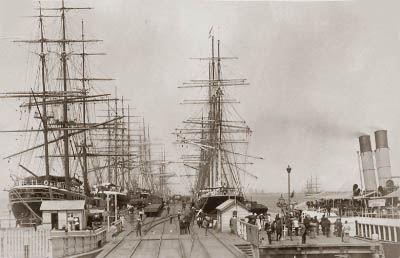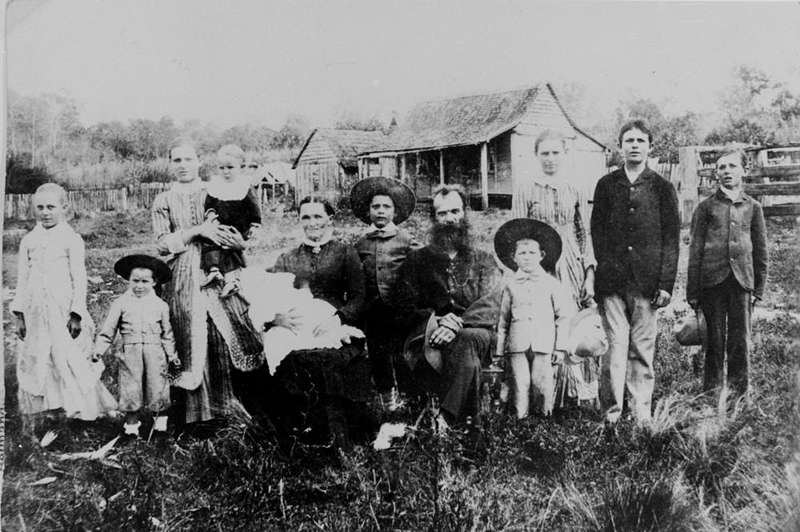The Loss and Reinstatement of Clan Forsyth
During Scotland’s complex history, Clan Forsyth faced periods of obscurity and near dissolution. Political turmoil, wars, and shifting allegiances caused the clan to lose prominence for several centuries. However, dedicated historians and Forsyth’s descendants worked tirelessly to restore the clan’s recognition.
In the late 20th century, the Forsyth Clan Society played a significant role in reinstating the clan’s heritage. Through research, documentation, and active participation in Scottish cultural events, the society revived the Forsyth name, ensuring its legacy would not be forgotten. Today, Clan Forsyth enjoys a resurgence, with its members proudly celebrating their history and traditions.
Clan Forsyth, like many Scottish clans, experienced periods of upheaval and displacement due to political and religious conflicts. While there is no singular, well-documented event of Clan Forsyth being exiled en masse from Scotland to Ireland, members of the clan likely migrated or were forced to leave Scotland due to several historical factors:
1. The Wars of Scottish Independence (13th-14th Century)
Clan Forsyth, originally based in the Lowlands around Lanarkshire and Stirling, supported the Scottish cause against English rule. However, conflicts and shifting allegiances may have led some members to seek refuge elsewhere.

In the Battle of Flodden almost every noble family in Scotland lost at least 1 member
2. Religious Conflicts & The Reformation (16th-17th Century)
During the Protestant Reformation and subsequent struggles between Catholics and Protestants in Scotland, many families, including members of Clan Forsyth, faced persecution. Some Forsyths who remained Catholic may have found themselves unwelcome and relocated to Ireland, particularly under James VI’s Protestant rule.
3. The Plantation of Ulster (Early 1600s)
The Plantation of Ulster was the project by the English monarchy to colonise the northern province of Ireland with Protestant settlers from England and from Scotland.
This came in the wake of the Nine Years War (1595-1603), in which the Gaelic Irish Ulster lords resisted the expansion of the English state in Ireland. The English victory in this war paved the way for a transformation of the province.
Land in Ulster was confiscated from the native Irish lords, some of whom were compensated with land elsewhere. But some, especially those who had fled the country, were dispossessed entirely.
It was the largest and most successful of the ‘plantations’ or projects at colonisation, in early modern Ireland. Compared to plantations in Laois and Offaly, Munster and elsewhere, the Ulster Plantation resulted in the greatest number of settlers imported, as well as the extensive construction of fortified towns to defend them. This combination meant that the settlement could not easily be destroyed even during the havoc of the Catholic rebellion of 1641.
Along with the state-sponsored plantation in the centre, west and south of Ulster, the east of the province was also ‘planted’ by private lords, mostly from Scotland, who successfully imported a large number of settlers.

The walls of Derry. The walled city was founded during the Ulster Plantation.
The Plantation of Ulster did much to transform the social, economic, political, linguistic and religious geography of the north of Ireland. It created a solid block of Protestant settlement there that persisted into the modern era. However, the impact of the Plantation of the early 1600s can be overstated. English and Scottish Protestant migration to Ulster was not limited to the Plantation itself. Scottish Presbyterians in particular, arrived in Ulster in several subsequent waves, most notably in the 1690s.
During the early 17th century, the Scottish and English crowns encouraged Protestant settlement in Ulster (modern Northern Ireland) to displace the native Irish population. Many Lowland Scots, including Forsyths, migrated voluntarily or were sent there as part of this colonization effort. These settlers became part of the Ulster Scots (Scotch-Irish) community.
Ulster Plantation Notes
James I of England (James VI of Scotland) organised plantation of Ulster in 1609
Plantation meant ‘planting’ or moving English and Scots settlers to Ireland to get more control in Ireland
English felt they couldn’t trust Irish who would be disloyal and rebel (Irish had rebelled/fought during the 9 Years war)
King James confiscated 5 million acres
Gave land to 3 groups
1. Undertakers (settlers or planters) (got 73% of land) £5 rent per acre, had to
bring English or Scottish tenants to rent and work the land
2. Soldiers (Servitors or Adventurers) (got 13% of land) £8 rent per acre (were
allowed to rent to Irish)
3. Loyal to crown Irish (got 14% of land) £10 rent per acre (allowed to rent to Irish)
By 1640 40,000 English and Scottish settlers moved to Ireland
Settlers had to promise or undertake to:
• pay rent
• build towns (e.g. Londonderry, Coleraine)
• speak English
• follow obey English common law
• promote protestant versions of Christianity (Anglican and Presbyterian)
• introduce new farming methods
• promote English culture and customs
• build stone houses and bawns (wall around the garden/courtyard)
Derry/Londonderry
James also convinced craftsmen from the London Companies or guilds to move to Ireland (esp. Co. Derry renamed Londonderry)
Londonderry Town/City: wall for protection, protestants inside the walls of city, roman catholics outside in an area the Bogside.
Market squares in towns were known as the ‘Diamond’

During the Ulster Plantation (1609–1697), many Scots, including members of Clan Forsyth, settled in the northern counties of Ireland. The plantation primarily encompassed the counties of Antrim, Down, Armagh, Tyrone, Donegal, Cavan, Fermanagh, and Londonderry. While specific records detailing the exact locations of Forsyth settlements are scarce, the surname Forsythe is recognized as Scottish in origin and is found throughout these regions.
The Forsyths, like many other Scottish settlers, were likely involved in the cultivation of flax, a key crop in Ulster’s linen industry. The introduction of flax farming and linen production was a significant aspect of the plantation’s economic development. The settlers brought with them agricultural practices that contributed to the growth of this industry in Ulster.
Therefore, it’s plausible that members of Clan Forsyth (Spelt “Forsith” in Ulster -Scot Dialect) settled in various parts of Ulster and surrounding counties, engaging in flax cultivation and contributing to the region’s linen production. However, without specific historical records, it’s challenging to pinpoint exact locations of their settlements.
 The Scots in Ulster Surnames Map & Pocket Guide
The Scots in Ulster Surnames Map & Pocket Guide
4. Covenanters & Political Unrest (17th Century)
During the turbulent 1600s, many Scots who opposed the monarchy’s interference in Presbyterian religious matters (Covenanters) faced persecution. Some were imprisoned, exiled, or fled to Ireland for safety.
5. Jacobite Rebellions (17th-18th Century)

An incident in the rebellion of 1745. The eight featured highlanders in the painting wear over twenty different tartans
The Forsyths were not a major Jacobite clan, but political and military defeats during the Jacobite uprisings of the late 17th and early 18th centuries caused many Scottish families to disperse. Some took refuge in Ireland, while others emigrated further afield to North America.
Why did members of Clan Forsyth Leave Ireland in Mid 19th Century after the Potatoe famine
Members of Clan Forsyth, like many Scots-Irish (Ulster Scots) families in Ireland, left in the mid-19th century due to a combination of economic hardship, famine-related consequences, and opportunities abroad. The Irish Potato Famine (1845-1852) was a major catalyst, but additional political and social factors also played a role.
1. Impact of the Great Famine (1845-1852)
Although the worst effects of the famine were felt in Catholic-majority southern and western Ireland, Ulster (where many Scots-Irish, including Forsyth families, lived) was also affected. While Protestant landowners and tenant farmers fared slightly better than Catholic peasants, economic hardship still forced many to leave.
Declining agricultural production: Even in Ulster, potato crops failed, causing food shortages and economic strain.
Increased rents and evictions: Many tenant farmers (including Scots-Irish families) struggled to pay rent, leading to evictions by landlords.
Famine-related disease outbreaks: Cholera and typhus spread due to weakened populations and poor sanitation.
2. Declining Industrial Opportunities in Ulster
The linen industry, a major employer in Ulster, struggled due to economic downturns, leading to job losses.
Many Scots-Irish workers, previously employed in mills and textile production, found it difficult to sustain their livelihoods.
3. Religious & Political Tensions
While Scots-Irish Protestants were generally favored by British rule, political unrest in Ireland continued to create instability.
Growing nationalist movements in Ireland made some Protestant families feel uncertain about their future, pushing them to seek stability elsewhere.
4. Availability of Cheap Land in America, Canada & Australia
The U.S., Canada, and Australia offered land and work opportunities, making migration an attractive option.
Many Forsyths who had already migrated earlier helped relatives make the journey.
5. Assisted Emigration Programs
Some landowners and government initiatives funded the emigration of tenant farmers to reduce overpopulation and poverty.
Ulster Scots families often took advantage of these schemes to start anew in North America or Australia.
Where Did They Go?

United States: Many settled in Pennsylvania, Ohio, and the Appalachian region, where Scots-Irish communities were already established.
Canada: Some moved to Ontario and Nova Scotia, areas with large Scottish and Scots-Irish populations.
Australia & New Zealand: Assisted migration programs attracted Scots-Irish settlers looking for work and land.
The mid-19th-century exodus of Forsyth families from Ireland was driven by economic hardship, famine-related struggles, and better prospects abroad. Like many Scots-Irish, they sought stability in the U.S., Canada, and Australia, where they played a significant role in shaping local communities.
Conclusion
Rather than a single forced exile, Clan Forsyth’s presence in Ireland likely resulted from waves of migration due to political conflicts, religious persecution, and economic opportunities during the Plantation of Ulster. Many Scottish families, including the Forsyths, became part of the Protestant Scots-Irish community in Northern Ireland, with later generations moving to America and other British colonies including Australia around 1865 in the Fassifern valley in Queesland and other locations in Southern Australia.

